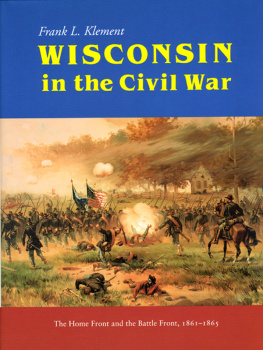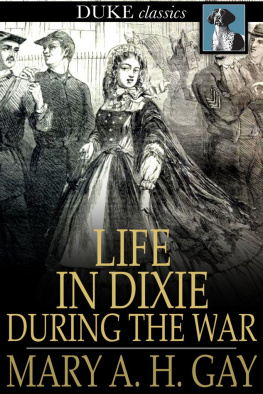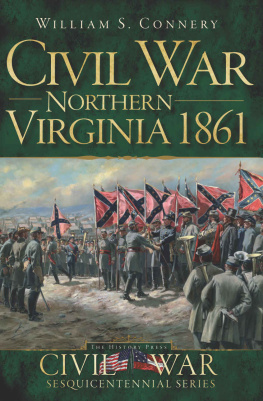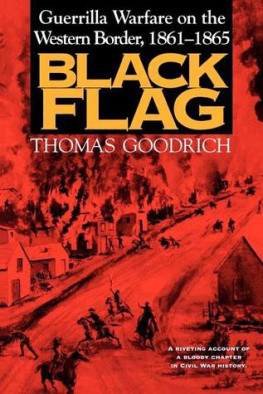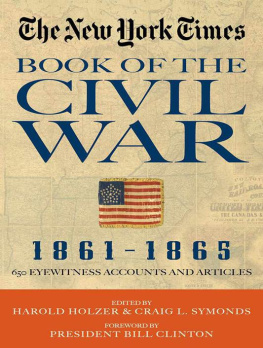This edition is published by PICKLE PARTNERS PUBLISHINGwww.picklepartnerspublishing.com
To join our mailing list for new titles or for issues with our books picklepublishing@gmail.com
Or on Facebook
Text originally published in 1952 under the same title.
Pickle Partners Publishing 2015, all rights reserved. No part of this publication may be reproduced, stored in a retrieval system or transmitted by any means, electrical, mechanical or otherwise without the written permission of the copyright holder.
Publishers Note
Although in most cases we have retained the Authors original spelling and grammar to authentically reproduce the work of the Author and the original intent of such material, some additional notes and clarifications have been added for the modern readers benefit.
We have also made every effort to include all maps and illustrations of the original edition the limitations of formatting do not allow of including larger maps, we will upload as many of these maps as possible.
THE NORTHERN RAILROADS IN THE CIVIL WAR 1861-1865
BY
THOMAS WEBER
FOREWORD
The Highways of a people are one of the surest indices of their condition and character. Without them there can be neither commerce nor wealth; neither intelligence nor social order.Henry V. Poor, Railroad Manual of the United States
THE MANY GENERAL RAILROAD HISTORIES do not touch to any great extent on the Civil War; and only a few histories dealing with individual lines treat this period. This work is not, however, an attempt to write a general history of railroad transportation during this time of national crisis. Several events important for railroad historians, such as the founding in 1863 of the Brotherhood of Locomotive Engineers, have been omitted. Rather this book tries to establish a relationship between the railroads and the war, to note how the war affected railroad activities, and how in turn railroad experience affected the events of the war. It is therefore one phase of railroad history. Since the primary interest is railroads, not the Civil War itself, battles fought over railroad lines and junction points have also been omitted, except as they affected the function of the railroad in providing supplies and transportation of troops and other personnel in the various theaters of war. In general, it will be found that the period from 1861 to 1865 was an important one for the railroads, not because of any great expansion, but rather because of the general consolidation of gains made in the fifties, the experimenting with new and better methods of operation, the finding of new methods of economizing, and the growth in technical ability which enabled the railroads to handle the heavy wartime traffic. These factors once and for all established the railroads as an integral part of the American economy. On the other side, it will be found that the railroads, in their function of furnishing supplies and troops to the various theaters of war, materially affected the character of the war itself, and provided for the North a necessary element of victory.
CHAPTER ITHE NORTHERN RAILROADS AT THE OUTBREAK OF THE CIVIL WAR
So far as breaking up the Union by force of arms was concerned, the attempt came fully a decade too late. It Is not impossible that it might have succeeded in 1850, when over 40% of the nations inhabitants formed a truly solid South and the opposition 60% was scattered from Skowhegan, Maine, to the Mississippi, with no completed means of transportation at either end. By 1860 the gaps in the north were bridged with steel.Slason Thompson, Short History of American Railways
RAILROAD COMMERCE as we know it was really a creation of the 1850s. Previous to 1850 the only rail connection between the Eastern seaboard and the Great Lakes was the series of five short lines, not physically connected, which later were organized into the New York Central Railroad, and the only important railroad in the trans-Allegheny region was a line from Sandusky to Cincinnati. {1} The lines through New York state had to meet the competition of the Erie Canal, not an easy thing to do at first.
During the 1850s railroad construction underwent a tremendous advance. Lines were completed from Boston to Ogdensburg on Lake Ontario by way of Rouses Point; the New York and Erie touched Lake Erie at Dunkirk in 1851; the Pennsylvania Railroad was opened to Pittsburgh; and the Baltimore and Ohio to Wheeling. The Michigan Central and the Michigan Southern fought for entry into Chicago, and the Pittsburgh, Ft. Wayne, and Chicago provided an important route which was later to become part of the Pennsylvania Railroad. A similar but slower development took place in the South, as rails connected Georgia with the Tennessee River, and the Mississippi was touched at Memphis. By 1860 railroads radiating from Lake Erie and Lake Michigan tapped the Mississippi at ten points and the Ohio at eight. {2} The chief North-South routes were the Illinois Central from Dunleith and Chicago to Cairo, the Louisville, New Albany, and Chicago (now the Monon) in Indiana, the Cleveland, Columbus, and Cincinnati, and the Cleveland and Pittsburgh in Ohio. In the East it was possible, though with many changes and stopovers, to travel by rail from Boston to Washington. {3}
The Chicago and Rock Island Railroad had bridged the Father of Waters and connected with the Mississippi and Missouri Railroad to Des Moines. {4} The Chicago, Burlington, and Quincy connected at Burlington with the Burlington and Missouri to Ottumwa, Iowa, and at Quincy with the Hannibal and St. Joseph. {5} The Ohio and Mississippi Railroad did business with the Pacific Railroad of Missouri, which looked forward to a connection with the Kansas branch of the Union Pacific. {6} Of the approximately 30,000 miles of railroad in the United States in 1860, about 22,000 had been built in the last decade; of that 22,000 almost 15,000 was constructed in the North with Ohio, Indiana, and Illinois leading all other states. {7} Though numerous railroad connections existed between the Great Lakes and the seaboard, there was no connection between North-South railroads except by steamboat on the Ohio or ferry across the Potomac to Alexandria. {8}
By 1860, railroads were beginning to supplant canals, particularly in the carriage of through freight from Chicago and the West to tidewater ports along the Atlantic. In 1861, New York state railroads carried 3,390,850 tons, canals 2,980,144 tons; in Pennsylvania, railroads carried 6,921,354 tons, canals 5,349,513 tons. {9} From Cairo, Ill., it cost less to send goods via the Ohio River and the Pennsylvania Railroad to Philadelphia than to use the old route via the Great Lakes from Chicago to Buffaloand Philadelphia was at tide water. {10} Likewise, the route directly east was cheaper and quicker than the route via the Mississippi to New Orleans. Cotton, shipped from Memphis to Cincinnati by water, thence by rail through Buffalo to Boston, cost $4.50 per bale for the entire journey. This was not only a great deal cheaper than the New Orleans route, but about thirty days quicker. {11}




